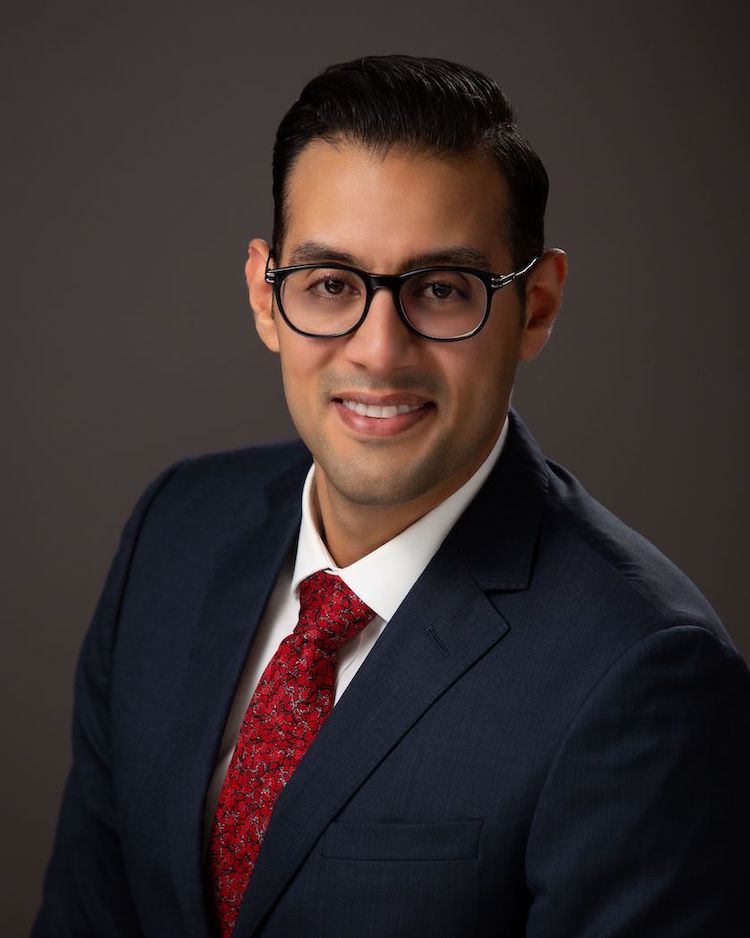
Do I Really Belong Here? Impostor Syndrome, the Loud Voice in Our Heads
by Laurent A. Del Angel Diaz, MD
Issue 36 | Volume 1
A rapid pounding in my chest woke me up in the morning, as I walk through the hospital doors, my hands start to sweat while my mind was racing thinking of all the possible things that could go wrong that day. Am I even able to solve all of those things? What if I cannot intubate a patient? What if I can’t place that difficult central line? What if someone dies because I am not good enough for this job? This constant unsettling fear is not a fear of failure, but of being found out. Despite years of training, exams, certifications, sleepless nights, and sacrifices, I couldn’t shake the thought that I didn’t belong. That fear has a name: impostor syndrome.
Imposter syndrome (also known as impostor phenomenon, fraud syndrome, perceived fraudulence, or impostor experience) was first described by psychologists Clance and Imes in 1978 (1) and became widely known after Clance´s 1985 book “The Impostor Phenomenon: When Success Makes You Feel Like a Fake” (2). While impostor syndrome can affect any individual, it is particularly prevalent among high- performing professionals in the healthcare sector (5), with a prevalence of 22-60% in healthcare professionals and medical students (7).
Impostor syndrome is a psychological pattern that can lead to chronic self-doubt, burnout, emotional exhaustion, work-life conflict, and, in severe cases, even the risk of self-harm and suicide (8,9,10,11).
Although there’s no universally accepted definition of impostor syndrome, tools like the Clance Impostor Phenomenon Scale (CIPS) (2) and the Young Impostor Scale (12) offer valuable insight into how this entity manifests. The original criteria outlined by Clance have since been expanded, helping to illuminate key characteristics often seen in those struggling with impostor syndrome. These include the impostor cycle, perfectionism, super-heroism, atychiphobia (fear of failure), denial of competence, and achiever’s phobia (achievemephobia) (3)(4)(6).
Anesthesiologists are trained to be “perfect” – to not make mistakes, to know every answer, to always be in control. But underneath the white coat or the surgical scrubs, many physicians carry a quiet anxiety that they’re not as competent as others think. As a junior anesthesiologist and soon to be intensivist, I’ve learned that this internal daily battle can be especially intense in our field. Anesthesiology and critical care demand absolute vigilance, rapid decision-making, and a deep knowledge base that spans throughout multiple systems. Yet, unlike surgeons or internists, we often work in the shadows – if things go right, no one notices. If they go wrong, we’re suddenly center stage. Remember, “It’s always anesthesia’s fault.” That invisibility, paired with the pressure of responsibility, gives impostor syndrome room to grow.
Add that to the experience of being an international medical graduate, and the feeling of not measuring up can grow even stronger. Language barriers, cultural differences, and the pressure to prove yourself at every turn can amplify those internal doubts. I often compared myself to colleagues who seemed more confident, more fluent, more at ease. It took years to realize that competence doesn’t always look the same – and that the voice in my head wasn’t truth, but plain fear. Impostor syndrome doesn’t go away entirely, but it can be managed. For me, the turning point came when I started opening up about it with peers. I realized I wasn’t alone. Mentorship, community, and self-compassion made a huge difference. I’ve learned that doubt doesn’t mean I’m not capable – it means I care deeply and I’m pushing myself to grow.
To fellow anesthesiologists and physicians who feel like impostors: you are not alone, and you are not a fraud. You’ve earned your place. And to international doctors walking the same path I did – your perspective is your strength, not your weakness.
REFERENCES:
- Clance PR, Imes SA. The imposter phenomenon in high achieving women: Dynamics and therapeutic intervention. Psychother Theory Res Pract 1978;15(3):241-7.
- Clance PR. The Impostor Phenomenon: When Success Makes You Feel Like a Fake. Atlanta: Peachtree Publishers; 1985.
- Bravata DM, Watts SA, Keefer AL, Madhusudhan DK, Taylor KT, Clark DM, Nelson RS, Cokley KO, Hagg HK. Prevalence, Predictors, and Treatment of Impostor Syndrome: a Systematic Review. J Gen Intern Med. 2020 Apr;35(4):1252-1275
- Mak KKL, Kleitman S, Abbott MJ. Impostor Phenomenon Measurement Scales: A Systematic Review. Front Psychol. 2019;10:671.
- Chrousos GP, Mentis AA, Dardiotis E. Focusing on the Neuro- Psycho-Biological and Evolutionary Underpinnings of the Imposter Syndrome. Front Psychol. 2020;11:1553
- Huecker MR, Shreffler J, McKeny PT, et al. Imposter Phenomenon. [Updated 2023 Jul 31]. In: StatPearls [Internet]. Treasure Island (FL): StatPearls Publishing; 2025 Jan-.
- Gottlieb M, Chung A, Battaglioli N, Sebok-Syer SS, Kalantari A. Medical Education. 2020;54(2):116-124. doi:10.1111/medu.13956.
- Thompson T, Davis H, Davidson J. Attributional and affective responses of impostors to academic success and failure outcomes. Personality Individ Differ. 1998;25(2):381–96
- Crawford WS, Shanine KK, Whitman MV, Kacmar KM. Examining the impostor phenomenon and work-family conflict. J Manag Psychol. 2016;31(2):375–90.
- LaDonna KA, Ginsburg S, Watling C. “Rising to the level of your incompetence”: what physicians’ self-assessment of their performance reveals about the imposter syndrome in medicine. Acad Med. 2018;93(5):763–8.
- Cowman SE, Ferrari JR. “Am I for real?” Predicting impostor tendencies from self-handicapping and affective components. Soc Behav Personal. 2002;30(2):119–25.
- https://impostorsyndrome.com/rethinking-impostor- syndrome/#:~:text=Contact-,Rethinking%20Impostor%20 Syndrome%E2%84%A2,around%20the%20world%20since%201982
Authors

Laurent A. Del Angel Diaz, MD
Education Committee & Webinar Sub-Committee, SOCCA
Case Western Reserve University/University Hospitals Cleveland Medical Center
Cleveland, OH
|